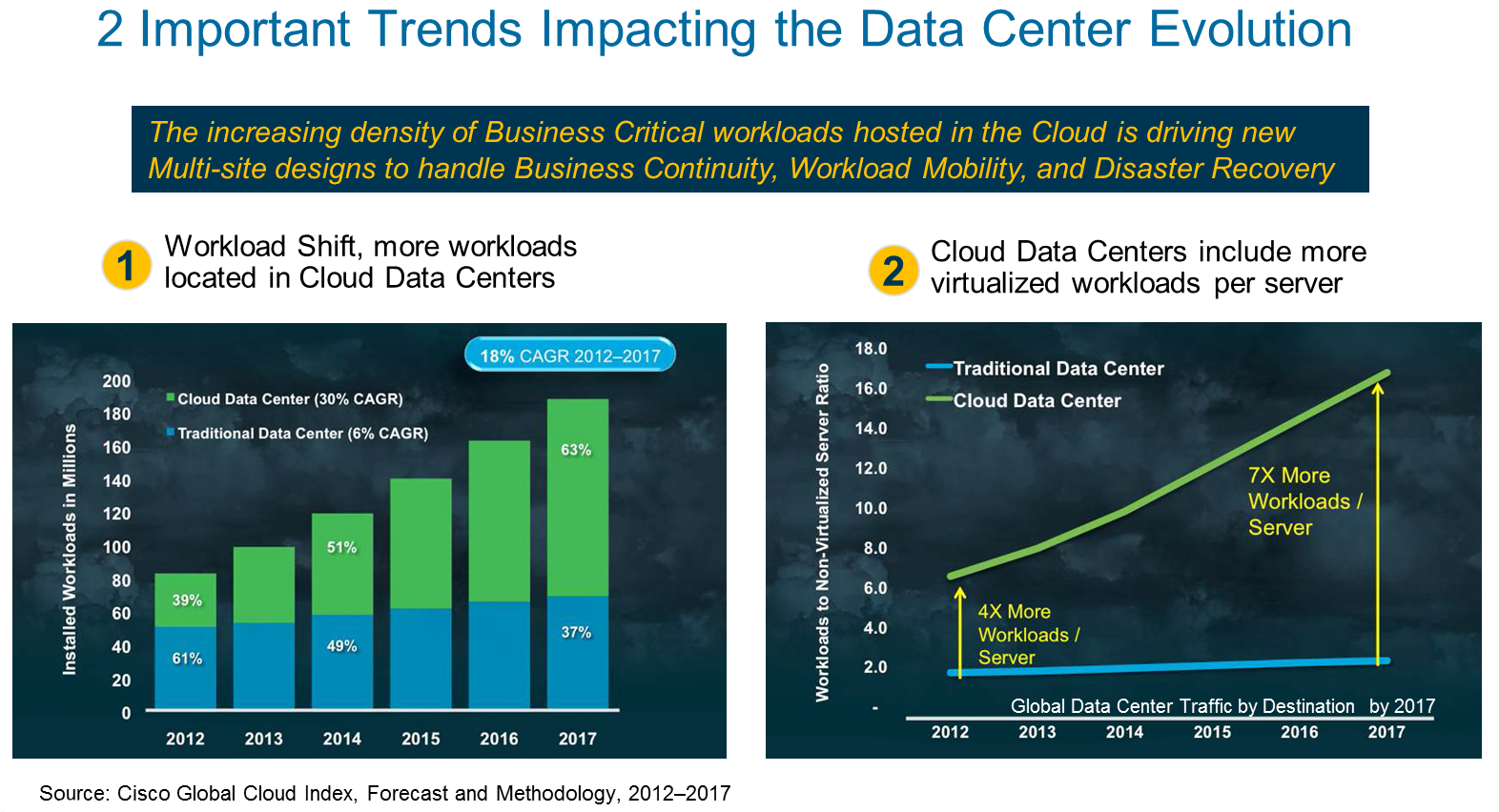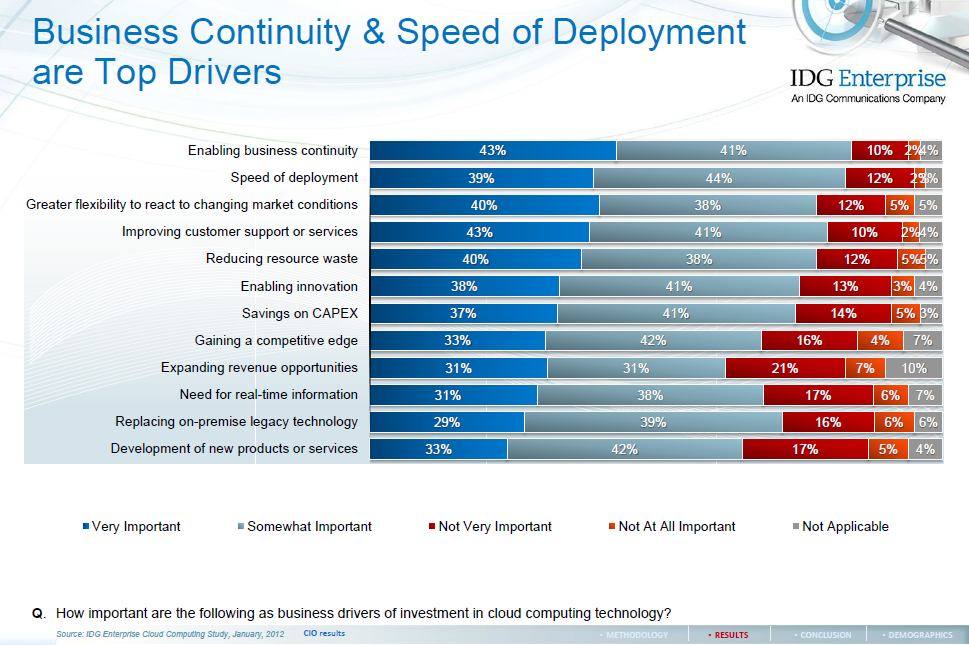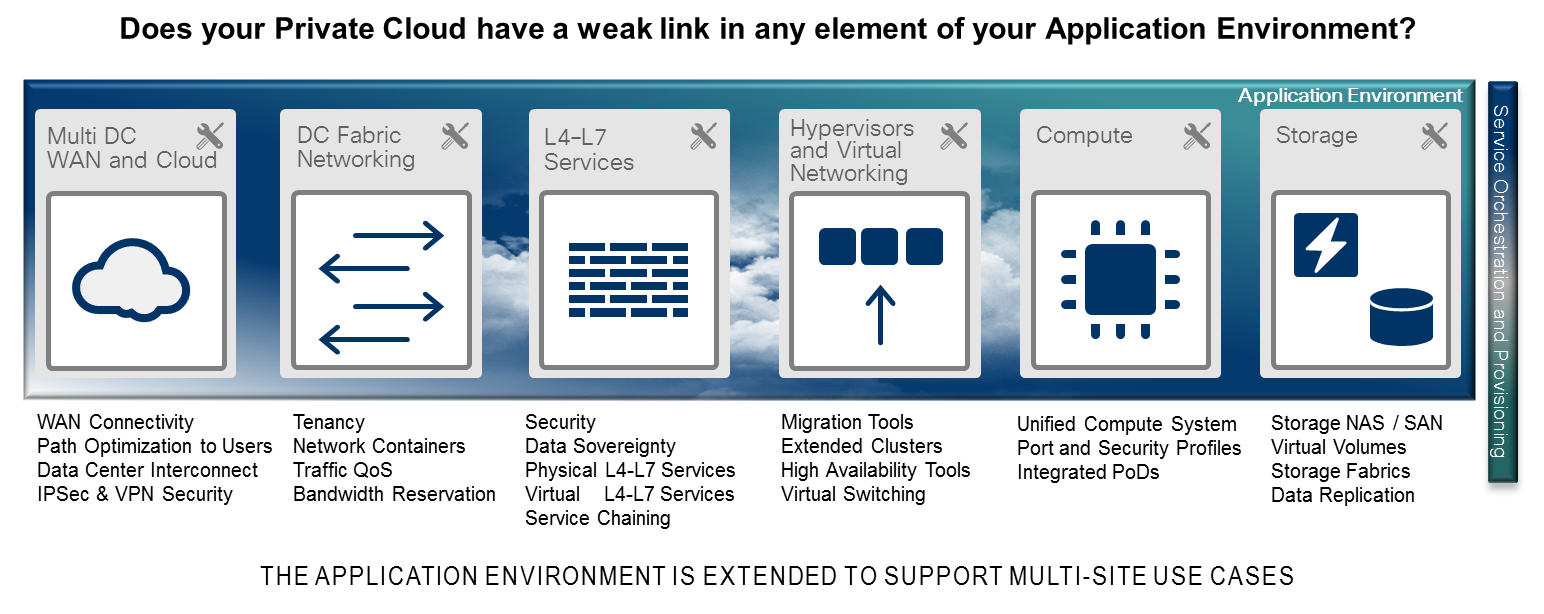In my previous blog, we provided an overview of the critical use cases and innovations we included in our new Business Continuity and Workload Mobility Solution for Private Cloud. This blog highlights the critical trends and challenges driving new multi-site Cloud designs.
Two important trends are driving CTO’s and CIO’s to deploy new multi-site Cloud solutions that provide better Business Continuity, Workload Mobility, and Disaster Recovery.
- More workloads are moving to the Private and Public Cloud versus the traditional data center
- Cloud Data Centers have a higher density of workloads per server than traditional data centers due to increased virtualization.
Cisco Global Cloud Index: Forecast and Methodology, 2012–2017

This ever increasing volume of Cloud hosted workloads is placing serious pressure on operations teams to manage larger scale data centers, and insure that they keep these workloads up and running, avoiding costly downtime or a nightmare service outage. Many of the CTO’s and CIO’s we’ve worked with are re-assessing their Multi-site strategy to insure they can answer some tough questions:
- What are the common weak points of multi-site Cloud designs that could prevent us from achieving our Business Continuity goals for our critical apps? Can we avoid them?
- How can we provide Workload Mobility between sites to provide a more agile Cloud environment?
- In the event of site outage, can our Private Cloud reduce the time it takes to recover critical applications to a new site?
- How can our Private Cloud deliver these critical services (Business Continuity, Workload Mobility, and Disaster Recovery) with lower cost and complexity?
Enterprises are turning to the Private Cloud to improve Business Continuity and lower cost
It’s not surprising that in a recent IDG Enterprise Cloud Computing study that “Enabling business continuity” was the top reason Enterprises are investing in cloud computing technologies. As more business critical workloads move to the Private Cloud, the pressure to manage, move, scale, and provide business continuity for those workloads increases. The operational reality is that these workloads should be spread across multiple sites to achieve basic availability goals (RPO/RTO); that’s business continuity 101. Second, these workloads should be allowed to move between Cloud sites to support basic operational needs; that’s the power of an agile Cloud. Achieving both of these goals with less cost and complexity is what we delivered in our new Business Continuity and Workload Mobility solution for Private Cloud.

The most common challenge we see in Multi-site Private Cloud designs
I recently met with the Director of IT operations at a large Enterprise that experienced some severe outages that impacted their business and customers. In our 3 hour meeting, we worked through their Business Continuity and Workload Mobility strategy for their top 10 applications. We quickly discovered that even though they had a solid redundancy design WITHIN each data center of their Private Cloud; that design did not hold up across multi-site topologies. More specifically, the weak point in their multi-site design was centered on L4-L7 services, including firewalls and load balancers, which impacted the performance and uptime of their critical applications. This leads us to the most common challenge we see across Multi-site Private Cloud designs.
As you extend your Cloud across multiple sites, any weak link in any tier of the Application Environment can lead to a service outage…weeding out these weak links across the multi-site environment is a challenge
Therefore, we apply RPO/RTO targets to each element Application Environment (not just the app) and provide multi-site solutions that meet those targets
Many Private Cloud providers develop strict RPO/RTO targets for their applications which is a good start, but those same RPO/RTO targets should also be applied to each element of the application environment. We’ve found that weeding out weak links across the complete application environment is critical and very achievable using our next-gen Cloud environment. The different elements of the Cloud Application Environment are described below.

A new Application Centric approach to Business Continuity and Workload Mobility
We understand that any weak link in the application environment can impact your critical applications and cause a nasty service outage. Our new Application Centric approach extends traditional Business Continuity and Workload Mobility models across the complete Application Environment. We match each of the critical services and resources that your application consumes, with a data center design that can meet that application’s stringent RPO/RTO requirements. In that way, we insure there are no weak links in your end-to-end multi-site design. And finally, our approach also supports the reality of your Private Cloud which includes BOTH physical and virtual resources and applications.
For More Info:
We encourage you to follow my blog series and check out our new business continuity and workload mobility solution (VMDC DCI), which describes key business drivers, Cisco DCI innovations, and validated designs that our customers are deploying in their private clouds.
Deploy with confidence! (and sleep better knowing your Cloud is more reliable and secure)
- CVD Design Guide – Cisco Business Continuity and Workload Mobility solution (VMDC DCI )
- Solution Overview – Cisco Business Continuity and Workload Mobility solution (VMDC DCI)
- BrightTalk Session — VMDC DCI for Business Continuity and Workload Mobility in the Private Cloud (webcast)
In the same blog series:
Good Job CISCO.